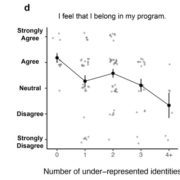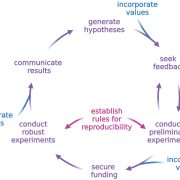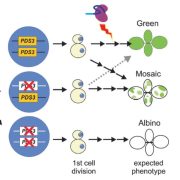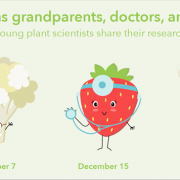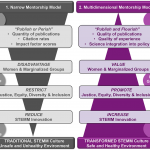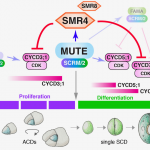Building back more equitable STEM education: Teach science by engaging students in doing science (bioRxiv)
 I firmly believe that the experience of doing science (observing, framing questions, designing and carrying out experiments, and interpreting findings) is the best way to cultivate future scientists, as well as a science-literate public (which we so clearly need). This preprint by Elgin et al. (it’s not often we have a first author with a Wikipedia page, check it out), makes a case for a greatly increased adoption of CURES – Course-based Undergraduate Research Experiences. What are CUREs? Imagine your typical undergraduate lab class, but instead of following a lab manual to a fixed point, the students get to actively participate in a guided research experience – in other words, they get to be a scientist. Fortunately, there is now a substantial database of CUREs that you can draw on and roll out for your students. To ensure access to these valuable experiences, the authors propose the formation of a National Center for Science Engagement, to stimulate and assist in the development and support of CUREs. These rich experiences should be available to all, even those at resource-limited institutions, so broadening their implementation will help to dismantle the inequities that limit full participation in science. (Note that many conferences including ICAR2021 and PlantBio21 are hosting workshops about plant science CUREs). This is an exciting proposal and all I can say is “Bravo!” (Summary by Mary Williams @PlantTeaching) bioRxiv 10.1101/2021.06.01.446616
I firmly believe that the experience of doing science (observing, framing questions, designing and carrying out experiments, and interpreting findings) is the best way to cultivate future scientists, as well as a science-literate public (which we so clearly need). This preprint by Elgin et al. (it’s not often we have a first author with a Wikipedia page, check it out), makes a case for a greatly increased adoption of CURES – Course-based Undergraduate Research Experiences. What are CUREs? Imagine your typical undergraduate lab class, but instead of following a lab manual to a fixed point, the students get to actively participate in a guided research experience – in other words, they get to be a scientist. Fortunately, there is now a substantial database of CUREs that you can draw on and roll out for your students. To ensure access to these valuable experiences, the authors propose the formation of a National Center for Science Engagement, to stimulate and assist in the development and support of CUREs. These rich experiences should be available to all, even those at resource-limited institutions, so broadening their implementation will help to dismantle the inequities that limit full participation in science. (Note that many conferences including ICAR2021 and PlantBio21 are hosting workshops about plant science CUREs). This is an exciting proposal and all I can say is “Bravo!” (Summary by Mary Williams @PlantTeaching) bioRxiv 10.1101/2021.06.01.446616




